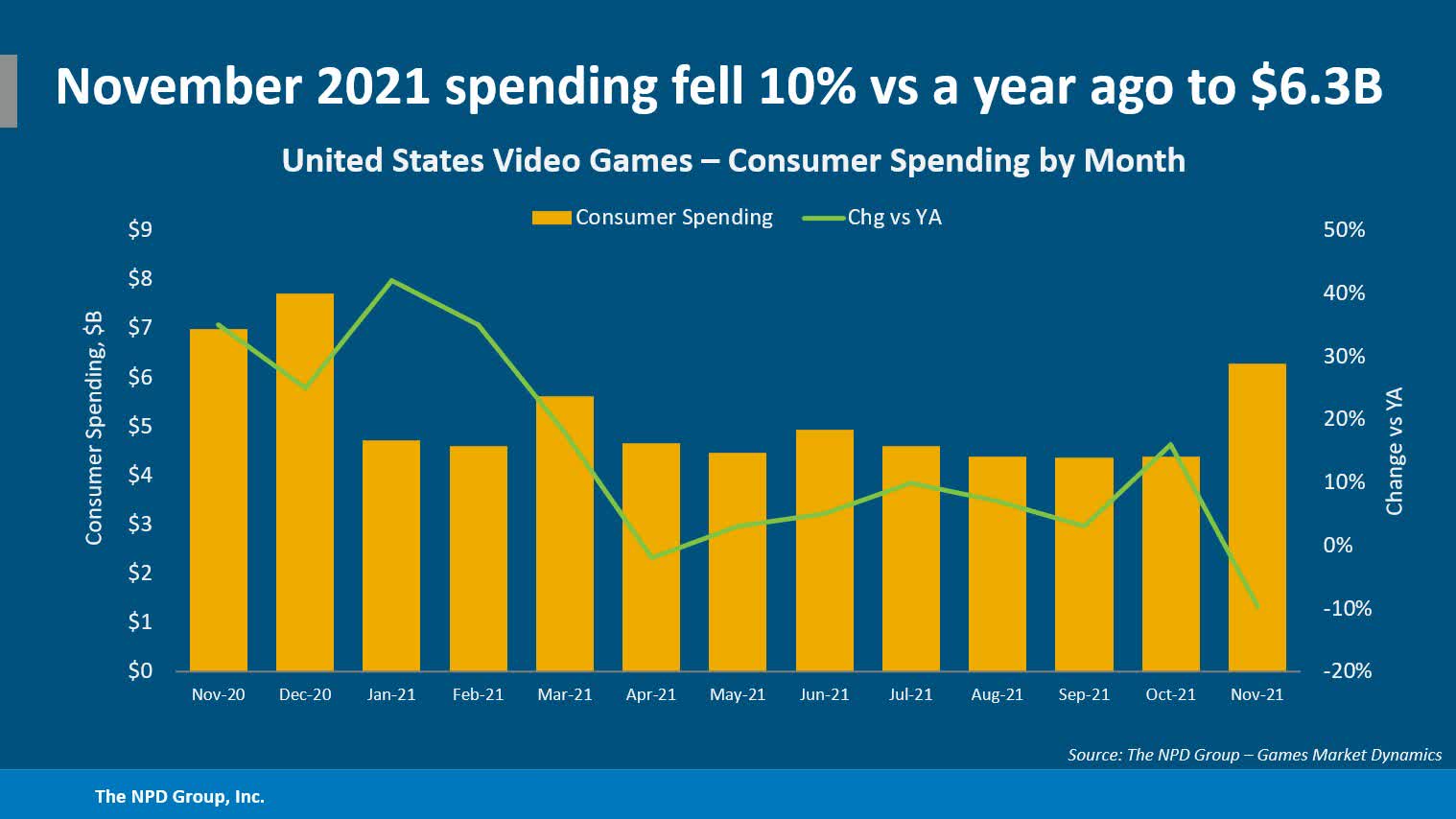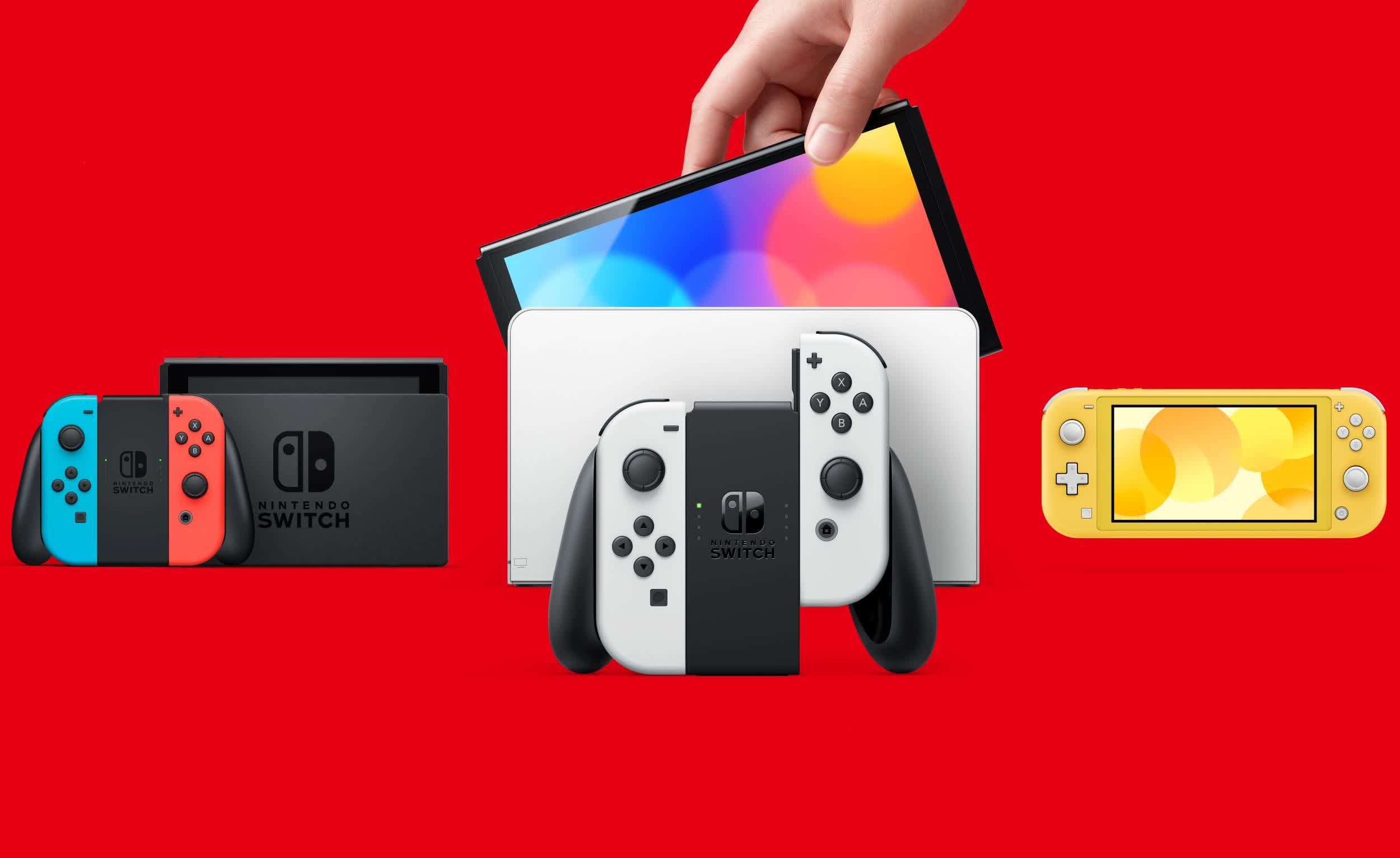The big picture: Consumer spending on video games in the US dropped 10 percent in November, from $7 billion a year ago to $6.3 billion this past month. Despite the shortcoming, year-to-date industry spending is up nine percent thus far in 2021 to $52.9 billion.
In his monthly report on the video game industry, The NPD Group's Mat Piscatella further revealed that Nintendo's Switch was the best-selling hardware platform, both in terms of units sold and dollars generated, in November as well as 2021 year-to-date.
Nintendo briefly lost the top spot in September, but rebounded in October and continued its winning ways in November.
Nintendo in a separate release cited combined sales of 1.13 million Switch, Switch Lite and Switch OLED models for the month of November. The company's portable handheld has now been the top-selling video game system for 35 out of the last 36 months.

Arguably more interesting is the fact that November hardware sales declined 38 percent compared to the same period last year. That's the lowest total for the month of November since 2016. According to Piscatella, declining hardware sales are driven by a lack of available console inventory.
We've all heard about the ongoing chip shortage, supply chain nightmares, the long-running scalper issue and stores' continued desire to only sell new-gen consoles online. Nintendo has even said it will miss its yearly Switch production goal by 20 percent. Still, Nintendo keeps winning the monthly battle against the PS5 and the Xbox Series. Why is that?
Perhaps it comes down to cost, as systems from Sony and Microsoft are more expensive than handhelds from Nintendo. Or maybe it has to do with sourcing the latest hardware for those home consoles, versus Nintendo using older hardware that is easier to produce. It could be something else entirely, or a combination of the lot. All I know for certain is that it's getting more puzzling as this whole thing drags on.
